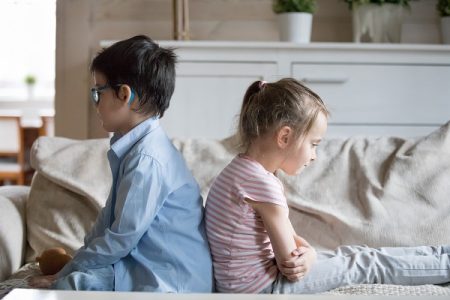
Can autism be cured?
There is no cure for autism as such. But with an early detection and treatment, people may cure autism to some extent such as improve the communication skills and lifestyle related issues.
What are the treatment Options for Autism:
There are various ways to treat autism and manage the symptoms of autism.
Medical Treatment for Autism:
Medical treatment may include early detection of signs and symptoms and treatment approaches to cure the symptoms of autism to a great extent. This early detection helps in preventing signs of autism from getting severe.
Early Intervention Services for managing the symptoms of autism:
Ewrly intervention is a great way for the treatment of autism. Early intervention helps children from birth till age of 3 years in learning important skills. It helps children in talking, walking and interacting with others. Even if children are not diagnosed with autism spectrum disorder (ASD) or autism but are at risk of getting it, parents can opt for this therapy to prevent the development of autism at a later stage of life. One such therapy involves a speech language pathologist (SLP).
More: Signs and Symptoms of Autism at Different Age Groups
More: What Causes Autism?
Speech Language Pathology: What does a speech therapist do?
As the symptoms of autism are broad and range from mild to severe, SLPs can diagnose the symptoms and work upon a child or an individual in schools or in classrooms or in offices.
An individual or a child may work on certain goals or practice within small groups in classrooms or in offices to practice skills with other children or persons. SLPs can help these children to learn and understand how to talk, read and write. They work on communication skills and speech of the children who are not able to talk and also try to improve their social skills.
How do SLPs help in autism? How can a speech therapist help a child with autism?
SLPs help children to:
• Understand and know how to follow directions
• Make nonverbal communications through postures and gestures
• Play with other children
• develop join attention as normal children
SLPs help children understand languages and use words and form phrases because of which a child is able to:
• Start conversation with others
• Answer questions or ask questions
• Give answers in turns or respond to questions
• Ask for help from anybody else
SLPs work on reading and writing skills of children to help them:
• Write words and phrases
• Read books without much difficulty
• Make sentences and write them
Augmentative and alternative communication techniques are used by SLPs to help the children learn basic skills which can be used and practiced at home too. These include:
• Sign languages
• Using posters, pictures, videos and objects to learn quickly and easily
• Use of computers and electronic devices to learn new things
An autistic child likes the food by its smell and colour the same way every time. They refuse to have new food. They are usually not able to differentiate among the foods by their taste. SLPs help children on this issue as well and try to develop their skills so as to like and accept new variety of foods.
Behaviour and Communication Approaches to treat autism
In addition to family participation and support, such therapies provide a structure, direction, and organization for the child to reduce intensity of autism signs and symptoms.
What is Applied Behaviour Analysis (ABA) for Autism? How does ABA help in autism?
ABA encourages positive behaviours and discourages negative behaviours in children in order to improve a variety of skills. The progress of a child is tracked and measured regularly.
What are the different types of ABA?
Discrete Trial Training (DTT):
It is a teaching style that uses a series of trials to teach each step of a desired behaviour or a response. Lessons are broken down into simpler sections and a positive support is used to reward correct answers and behaviours. Incorrect answers are ignored to boost confidence.
Early Intensive Behavioral Intervention (EIBI):
This is used for younger children with ASD, usually younger than five, and often younger than three.
Pivotal Response Training (PRT):
Its objective is to increase child’s motivation to learn, initiate communication with others and monitor their behaviour.
Verbal Behaviour Intervention (VBI):
It focuses on teaching verbal skills of a child or an individual suffering from autism.
Dietary Approaches for the treatment of autism
Various dietary treatments have been developed by therapists but many of them do not have a scientific support. Therefore, these are not widely recommended. An unproven treatment may help someone but not others with same problem.
Many biomedical treatments are also advised for a change in the diet. This may include making changes in certain types of foods in a child’s diet and using minerals and vitamin supplements as part of the food. Some people find that such a change in the diet makes differences in how their children feel and act. But the idea of this approach is solely based on the fact that allergies to some foods and lack of vitamins may complicate the behavior and affect development of autistic child respectively. This however needs more research and scientific evidences to fully establish or reject as a treatment option.
Other therapies that can be used for treatment of Autism Spectrum Disorder
Here are some more therapies that can be considered by doctors for autism treatment. Your child’s doctor will decide about the choice of treatment options based on the condition of the child and his or her symptoms. The child’s age can also influence the decision of the doctor.
Developmental, Individual Differences, Relationship-Based Approach (DIR; also called “Floortime”):
It focuses on emotional and relational development of a child (relationships, feelings etc.) and also on how a child reacts to sounds, smell and sights.
Occupational Therapy for autism treatment
This therapy is often used for sensory integration issues related with autism or ADS. It helps in teaching life skills that involve fine-motor movements, such as dressing, using utensils, cutting with scissors, and writing. Occupational therapy works to improve an individual’s overall quality of life and the ability to participate fully in daily activities. Every occupational therapy program is based on evaluations of individuals and goals. The occupational therapy for young children focuses on improving sensorimotor issues and sensory integration while in older children it often focuses on enhancing social behaviour and increasing an independency.
Physical Therapy (PT) for autism treatment
Gross motor skills are improved by a physical therapy. It also handles issues pertaining to sensory integration particularly of those which involves an individual’s ability to feel and get aware of the body in space. Similar to occupational therapy, physical therapy also improves a person’s ability to participate in everyday activities. Physical therapy works to improve and teach activities or skills such as walking, sitting, coordination and balancing skill. This therapy is most effective when integrated with early intervention programs.
Sensory Integration Therapy for managing autism symptoms
The therapy helps in dealing a person with information such as sounds, sight, and smell. It helps in improving the condition of a child who gets tensed and bothered by sounds, lights and different smells and also do not like touch and cuddle.
Speech Therapy for autism: What do you do in speech therapy?
It helps in improving a person’s communication skills such as using gestures and posture boards for people who don’t understand nonverbal communications.
Medications for Autism Treatment:
Medications or pharmaceutical treatments can help reduce some of the behavioural symptoms of ASD, including-self-injury, aggression, disruptive behaviour etc. Some of the commonly used medications for ASD are given below which should be consulted with a doctor before consuming.
Risperidone: How does risperidone work for autism?
It is the first FDA (Food and Drug Administration) approved medication for the treatment of symptoms such as aggressive behaviour, deliberate self-injury, temper and tantrum associated with ASD in children and adolescents.
Aripriprazole
It is a FDA approved medicine for the treatment of irritability in children and adolescents with ASD. Survey of 2009 in Paediatrics in a group of 98 children found that, by week 8, 52% of those taking aripriprazole, in the form of Abilify, experienced a 25% or greater reduction in autism-related irritability symptoms compared with 14% of those who took the sample.






